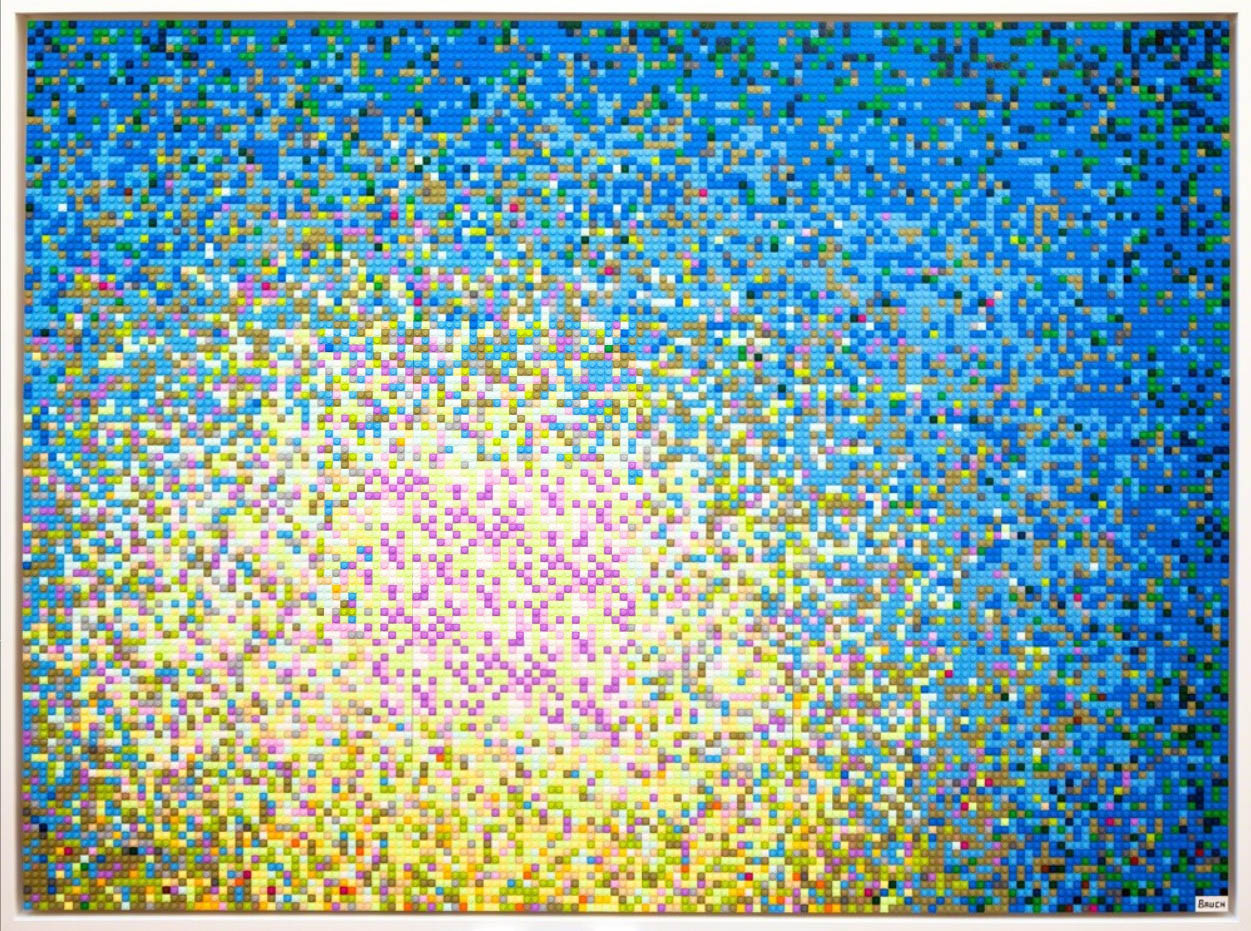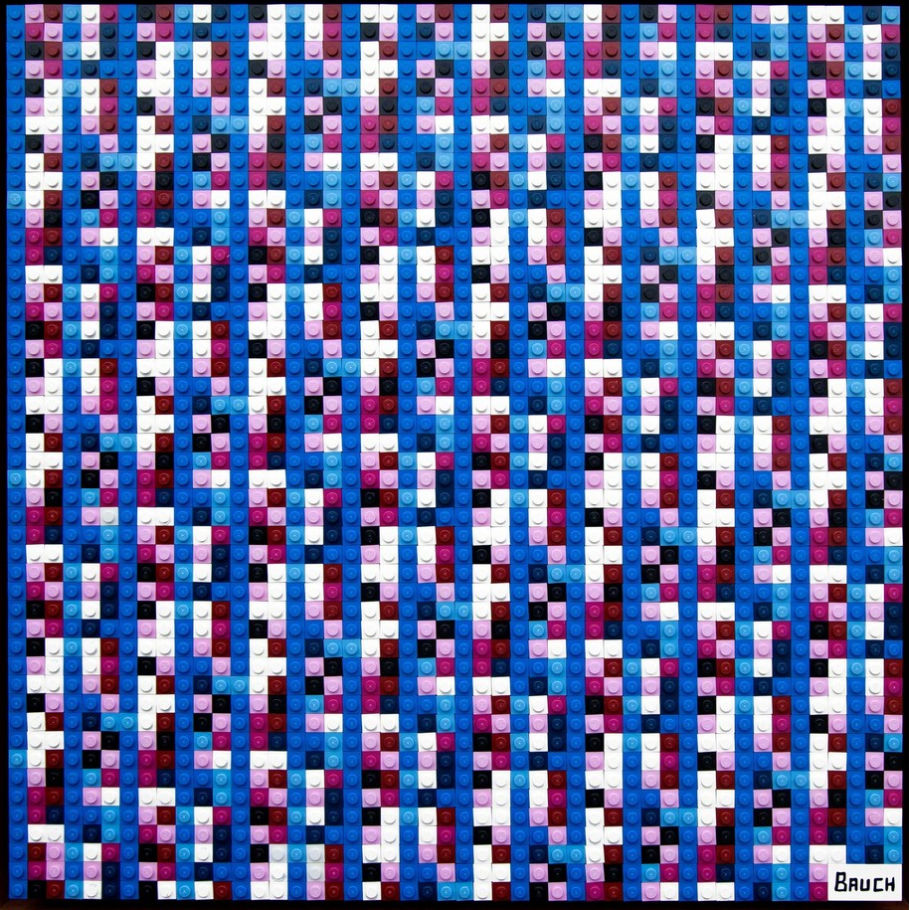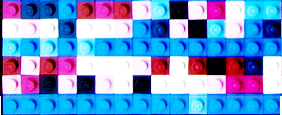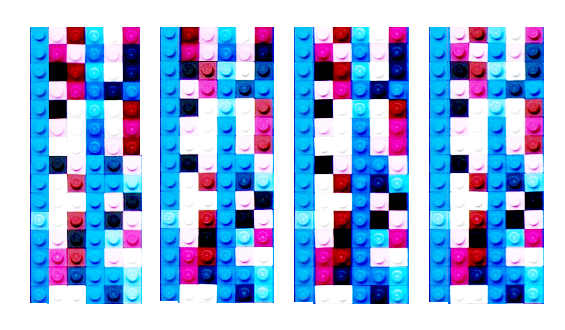The artist encrypted the keys to the cryptocross in Lego-installations, and we will try to get them from there

Hi, Habr! I suggest everyone to stretch their brains a little with a small crypto-rebus.
I’ll make a reservation right away, I didn’t completely solve the riddle myself, but the course of the decision seems to be clear so I would like to see how the community will solve it.
')
I apologize in advance for the style of presentation, but at four in the morning I will still be very brief telling short and to the point. Who are interested in the details - all links are given at the end of the note.
So, it all started with the fact that a certain artist Andy Bauch in 2016 bought a certain amount of cryptocurrency for several wallets. And then he took the private keys of these wallets and in some way known to him alone, he encrypted these keys in beautiful pictures. Such as under the heading, for example.
Then Andy folded these pictures from Lego blocks and literally last Friday (03/23/2018) put the whole thing in the art gallery of la's Castelli Art Space (links at the end).
In all this, as is usually the case with artists, a certain deep meaning is invested in the cost of art, etc. etc. But we have gathered here not to philosophize, but to solve riddles, so I will go straight to the point.
I randomly chose a picture from the wallet "INITIALLY VALUED AT $ 80" for picking. Putting a purse of 0.1875 BTC in 2016 miraculously turned into $ 1600 today, which obviously should speed up the decryption somewhat. Picture here:

So. Go.
I posterized the image so that there was less noise and slightly twisted the contrast with brightness. Picked up in Photoshop, I realized that this picture consists of the simplest blocks of 15 * 6. Here are these:

However, there are three more blocks, each of which differs from the main one only by one square. Here are all four blocks:

It uses blocks of eight colors, which suggests that each color encodes three bits.
The private key of a bitcoin wallet is a string, as I understand it, in Base58 format. Something like this:
L4QhpdfFzv1DHfoRcbG2T76Z4QN9zmhWhBNEsH22PbKHA4ZNkSThe key length can be different, so here we, alas, cannot get additional information.
At this stage, I thought of looking at this wallet in the blockchain and found out that yesterday some clever man, probably, had already cracked the code and there is no more money there = (
I suggest you complete the solution, or correct me if I made a mistake in the first steps. It remains to choose the color coding and this is, in fact, the most interesting thing in the whole rebus. I suppose that after getting the number, you need to perform the Number -> Base58 conversion.
Perhaps three different blocks give some hint, but it may be that the author simply made a mistake in the assembly.
In any case, I suspect that there is no money on all wallets anymore, so all further manipulations are just for fun.
Upd from SopaXT :
Those that for $ 20 and $ 30 I decided. The first uses binary digits, and the second uses ternary digits, and so on.
There was a so-called “Mini private key”, a string of 30 ASCII characters, where the key itself is its SHA256. By the way, if you add the "?" To the end, then the hash will start with a zero byte (such a tricky error check).
There one could notice a repeating sequence (210 cells in binary and 150 in ternary and quaternary).
Every 7/5 (respectively) of the cells is one byte, and there are 30 such bytes. In binary, seven-bit ASCII was used, as suggested by someone in IRC, I shared with him for it :).
In the fourfold, the first digit in the group is zero (this is not I, but _jstanley decided).
PS Figures with colors had to be compared by search.
Link to comment.
Additional Information:
Press Release Exhibition
Links to wallets
Source: https://habr.com/ru/post/351950/
All Articles